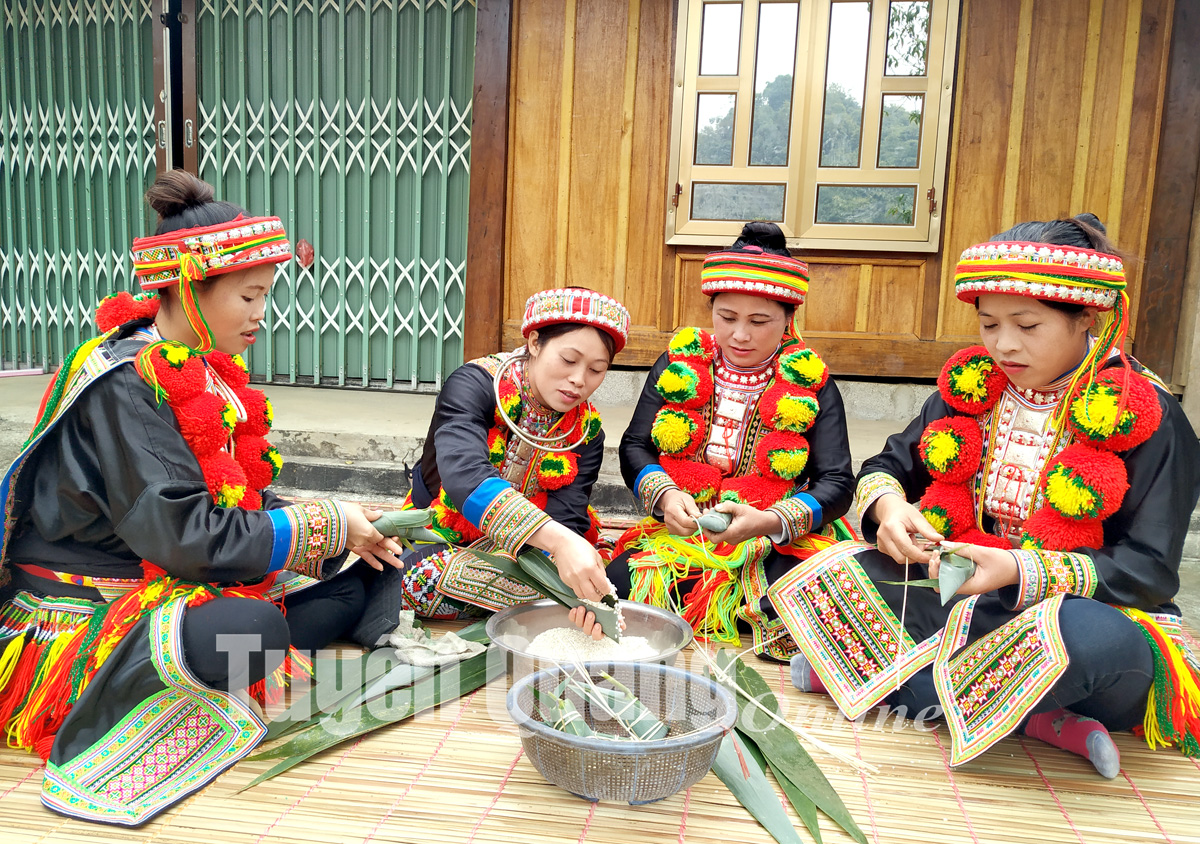
For the Dao Thanh Y people, the full moon day of the first lunar month is a very important day, so it is prepared very carefully. The Dao people consider the full moon day of January to be the best day to hold a house worshiping ceremony, praying for a peaceful and lucky year. So right after the Lunar New Year, the Dao Thanh Y people prepared offerings for the Full Moon day of the first lunar month. In addition to the offerings of chickens and pigs, the homeowner also prepares honey cakes wrapped with boiled leaves, snails, shrimps, longan leaves, and mustard greens. The shaman will perform an offering ceremony for the homeowner to ward off bad luck and invite good luck to the homeowner in the new year. After the worshiping ceremony, lucky charms made of red paper will be stuck in the corners of the house, hung in the pig pen of the Dao Thanh Y people to pray for good luck. At this time, red paper will also be pasted on the ancestral altar of the Dao Thanh Y people to invite the ancestors to celebrate the Full Moon Festival in January, blessing their descendants to have a full life during the year.
On the full moon day of the first lunar month, the Tay people also have many beautiful customs. For the Tay people, the Full Moon of January is considered the second Tet after the Lunar New Year, so the Tay people also wrap Tay banh chung and square banh chung; Organize to play traditional games such as bird's nest, pam, and toss.
As for the San Diu ethnic people, the full moon day of the first lunar month is celebrated solemnly and thoughtfully like the Lunar New Year. The San Diu people also prepare food trays to worship ancestors, wrap banh chung, slaughter pigs, and organize love songs. On this day, San Diu people often hold peace offerings and earth-giving ceremonies to pray for a peaceful year of home, good crops, and a prosperous and happy home. Therefore, the Full Moon of January is also considered Tet for the San Diu people.
Cao Lan ethnic people in Yen Thai village, Hoang Khai commune (Yen Son) often make noodles manually and make banh chung on the full moon day of the first lunar month. Cao Lan people believe that these are two dishes made from rice to express gratitude to the ancestors for blessing the good harvest in the past year, and at the same time convey wishes for the new year. On the full moon night of the first lunar month, after offering a tray of rice to the ancestors and making offerings, Cao Lan homeowners will wash their hands with fragrant grapefruit leaf water to offer tea, betel, areca nut, and incense to the ancestral altar. This custom not only shows gratitude to ancestors but also educates children to always be respectful to their grandparents, parents, and deceased family members.
For the Mong people, the Full Moon of January is also very important. Mong people will go on a spring trip from Lunar New Year to the end of the full moon day of January. Mong people consider the full moon day of January as an opportunity to strengthen neighborly relationships, visit brothers and relatives, and encourage each other to work hard in the new year. On the full moon day of the first lunar month, Mong people often hold culinary contests, Mong flute-playing contests, and love songs. Besides, the Mong people also organize wrapping chung cake, slaughtering pigs to make a tray of rice to offer to their ancestors, etc.

Comment
Print